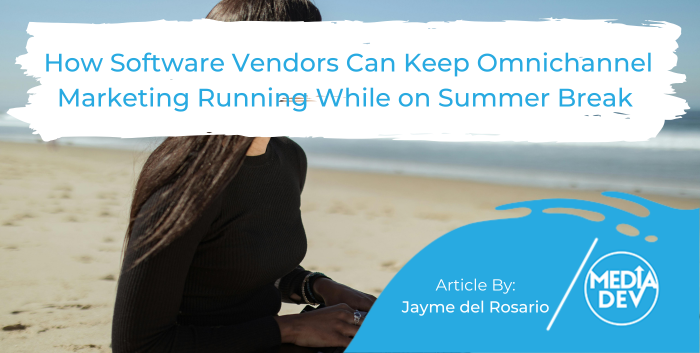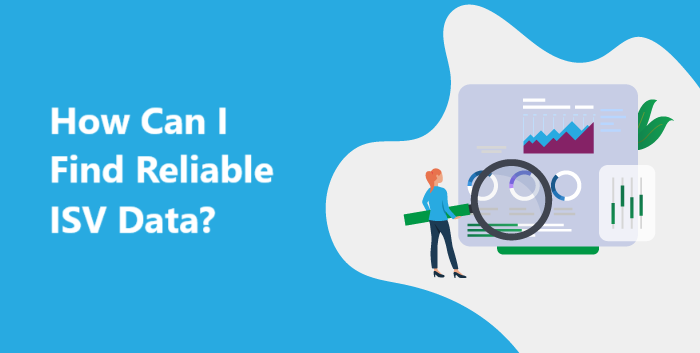Integrating or embedding one software product into another (or connecting two solutions via APIs) is a pillar to ensure growth for both the ISV and the OEM provider. These ISV-to-ISV relationships or ISV-OEM partnerships are, now more than ever, in great demand.
The economic downturn will only accelerate the need for ISVs to partner with other ISVs as end-user accounts freeze technology budgets for non-essential business solutions. Not only do ISVs need to ensure the competitivity of their solutions so that customers continue to purchase, but they also need to do so in a cost-effective way. And ISVs that OEM their products have a fantastic opportunity to accelerate growth despite the recession by selling through their ISV partners.
The buy versus build debate is always at the forefront of every potential partnership decision, but the bottom line is that the purpose of any OEM integration is to enhance the product offering of the ISV. However, how do you know which ISVs are the best target prospects to go after?
Here is a step-by-step approach to help get you started to choose the right ISVs to recruit into your OEM program.
Step #1 – Focus on Core Competences
We have worked with dozens of OEM customers who have tried targeting ISVs with similar offerings to their own. The logic is that by going after companies with similar types of solutions, they will have a deeper understanding about the features, and a greater need to accelerate their time to market (because it is their main area of focus). However, the inconvenience in doing this is that because the core competence of the ISV is so similar to that of the OEM, the OEM is seen as more of a competitor than a potential partner. In addition, the buy versus build argument most often falls in favor of the build option because they already have resources that are skilled in that area of expertise. It is rare that we have seen an ISVs partner with another ISV with a similar offering.
On the flip side, when the core competence is completely different from the potential OEM partner, the argument leans stronger on to the buy side of the coin. Hiring new resources with a different skill set to create features that stray from the core focus, is costly and time consuming. It’s usually considered to be much more efficient to buy than to build in this case; especially when the features of the OEM partner vastly improve the end-user experience by providing needed features that are otherwise absent from the product. By choosing ISVs who lack the features you provide, you should have an easier time initiating the discussion since product managers are keen to learn about such OEM offers as they will be able to enhance their solutions with minimal work.
Step #2 – Select Valuable Industry Verticals/Horizontals
As in all B2B segmentation, it is important to select the specific industry verticals (retail, fintech, healthcare, energy…) and horizontals that may be relevant to your offer. If you already have a proven track record in some industries (even if it is only with end-user customers), leveraging use cases or case studies is a great way to enhance your credibility in that domain. The low-hanging fruit may be within those same industry sectors because your knowledge and expertise in that area will reassure your prospects. It’s also good to branch out into other verticals or horizontals where you may have an edge. Many people make the mistake of choosing verticals because of the revenue-generating potential they hold; they want to go where they can generate the most amount of money. And while revenue is certainly important, it cannot be the only reason why you are targeting a particular vertical. Branching out into new verticals should always be about providing more value to the ISVs end-user customers. When that is your focus, the rest will come.
Step #3 – Company Size: Is bigger always better?
Many companies we work with choose to target the largest ISVs because the well-established ones are likely to have bigger budgets. However, there are several inconveniences to focusing solely on bigger ISVs: their sales cycles are longer, and more people are involved in the decision-making process, for example. In addition, everyone is going after the big players, which means that you are competing with so many other companies at the same time. And let’s also not forget that the well-established ISVs also have more resources and will debate the buy versus build argument at length before determining which way to go. That is not to say that they should be ignored, but I personally wouldn’t focus solely on them either.
On the other hand, fast-growth ISVs need to accelerate time-to-market more than anyone. They have usually received a first round of funding and are aggressively pursuing ways to take their business to the next level. In my opinion, these are the players to watch. They may not all be unicorns or the next Uber, but they are certainly worth targeting as they are quicker to pull the trigger and more likely to lean towards a buy.
Step #4 – ABM: When Less is More
If you do want to stick to the well-established ISVs, it makes sense to hone your strategy by focusing on the Top 50 most interesting accounts for your business, and adopting an ABM approach. Accounts Based Marketing, (or ABM), is when you select a specific list of companies you would like to work with and your outreach efforts are geared towards: identifying as many of the right buyer personas in those accounts as possible (account profiling), proactively outreaching to them with highly customized messaging via content marketing, email marketing, social selling and telemarketing. Implementing an ABM strategy means diving deep into each target account so that you can map out various business units, and subsidiary companies; profile relevant decision-makers, and build out a database of viable prospects within each and every one of those priority accounts. Much effort needs to go into selecting the target list to ensure the pertinence of the accounts you choose. And, it can be highly effective when done right to reduce the “noise” (leads generated within accounts that hold little interest to you).
Step #5 – Gather Market Intelligence
In line with an ABM approach, gathering deep market intelligence can help you be more effective when selecting the accounts you want to focus on. Understanding their buy versus build history, the companies they are currently partnered with, their technology infrastructure, types of end-user customers, geographical footprint, annual turnover, etc are the types of indicators that need to be explored in order to gauge the potential interest level of the ISV to opt for your OEM program. This intelligence-gathering exercise should be continually updated at least once a quarter since ISVs grow, receive new rounds of funding, initiate new projects, and go through with mergers & acquisitions that change the competitive landscape. Having a system in place for this kind of monitoring will help ensure that not only are you focusing your efforts on the right list of accounts, but it will also give your sales team valuable information for individualized pitches.
Conclusion
In conclusion, if you want to choose the best ISVs for your OEM program, you still need to create more visibility for your offer across channels. Repositioning your value prop, creating ISV-centric content, and doing your homework to know which ISVs hold the most potential for your business and why are a critical part of the process.
If you are looking for more ISV-OEM sales strategies that work, or if you do not currently have an OEM program and are looking to build one, we can help provide you with the strategic counsel you need to get started. Contact us for more information by writing to us at: contact@mediadev.com.








